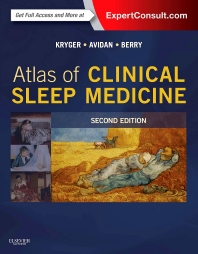Pictures for bedtime stories – how a platypus dreams
From within one of the larger sleep services, where we see all sleep disorders – respiratory and neurological, I realise that I may be one of the few UK Neurologists to benefit from the full range of pictures and videos within this book. As a regular teacher on the same range of sleep disorders, one of its best features is excellent online access (to all the pictures, graphs, polysomnography traces and patient videos). There are also several patient interviews – a really useful resource, and a key change to this second edition of the atlas, for a speciality where there are very few physical signs and the history is rarely taught at undergraduate level.
The US based authors have had the luxury of practising Sleep Medicine as a distinct subspeciality for many years. An accredited training programme (and a lucrative polysomnography tariff) has allowed large numbers of full inpatient video polysomnography studies to be performed for all sleep disorders. In the UK and mainland Europe, limited home studies are routinely performed for sleep apnoea screening (constituting the majority of referrals to any sleep service); they are generally less invasive and certainly much cheaper. Information on domiciliary studies of this kind is (inevitably) a weak point in the book.
There are many pages of polysomnography traces which I found helpful, as will my sleep technician colleagues; they will be of little use to those who do not have access to the ‘kit’. For epileptologists who also see nocturnal sleep disorders, the standard PSG page (a 30 second epoch, rather than 10 seconds) will take some acclimatisation.
It is unfortunate for the authors that they have published just behind the latest update to the International Classification of Sleep Disorders, which came online in 2014. Immediately, some of the diagnostic categories are outdated, for example in narcolepsy and insomnia.
For Neurologists who routinely miss sleep apnoea in their many patients with chronic disease – simple and quick screening tools like the STOPbang questionnaire will be useful! But they are not particularly easy to find. As usual, the chronic fatigue and fibromyalgia chapter describes sleep disorders as occurring with great frequency in these conditions. Too little is said about the obvious concern that sleep disorders are often the cause of fatigue (which is chronic), and may well be missed, only to be mislabelled unhelpfully as CFS/ME.
The book first covers both normal sleep biology and the standard sleep disorders, and sleep disturbance in common medical conditions, which is a structure it shares with a number of other sleep textbooks. The chapters covering the history and common assessment tools were separated, which did not seem logical.
However, given that this is an atlas, it seems best to judge on the picture and video content, not the text, and these will certainly be useful for clinical workers and teachers in sleep medicine. UK readers will need to allow for the US bias, both in terms of setting up the sleep studies and the available drugs. Overall, like most atlases, this is a book to dip into rather than to read through.
And the platypus? The first video shows a platypus, awake and then dreaming. The platypus has more REM sleep than any other mammal, giving up to 8 hours a day of dreams. Sad to report, this was not nearly as dramatic as I had hoped. Platypus dreams seem far more peaceful than those of our Parkinson’s patients!

